Hamilton took pole position for the inaugural Saudi Arabian Grand Prix after his title rival Verstappen looked set to beat him only to crash at the final corner. Hamilton's Mercedes teammate Valtteri Bottas qualified for the race on Sunday at P2 and Verstappen at P3, having managed to finish as third fastest. If Hamilton wins this weekend and secures the extra point for the fastest lap then he will move level with Verstappen heading into a remarkable final race. On the other hand, this will be Verstappen's first chance to wrap up the Formula 1 Drivers' title. If he finishes first and Hamilton 7th or lower, the Dutchman will be crowned champion. The same applies if Verstappen finishes 2nd and Hamilton drops out of the race.
Here is a look at how to watch Saudi Arabian Grand Prix main race in India, the Saudi Arabian Grand Prix live streaming details. Currently, the first qualifying period is eighteen minutes long, with all twenty cars competing. At the end of Q1, the five slowest drivers are eliminated from further qualification rounds, and fill positions sixteen to twenty on the grid based on their fastest lap time. Any driver attempting to set a qualifying time when the period ends is permitted to finish his lap, though no new laps may be started once the chequered flag is shown. After a short break, the second period begins, with fifteen cars on the circuit. At the end of Q2, the five slowest drivers are once again eliminated, filling grid positions eleven to fifteen.
Finally, the third qualifying period features the ten fastest drivers from the second period. The drivers are issued a new set of soft tyres and have twelve minutes to set a qualifying time, which will determine the top ten positions on the grid. The driver who sets the fastest qualifying time is said to be on pole position, the grid position that offers the best physical position from which to start the race. On a race weekend with sprint qualifying, the sessions on Friday instead consist of one practice session and a traditional qualifying session, which is limited to soft tyres and sets the grid of sprint qualifying.
Only the winner of the sprint qualifying will be considered to have taken pole position for the main Grand Prix, and they receive a trophy similar to the pole position trophy awarded at other race weekends. The top three finishers in sprint qualifying receive World Championship points in a 3–2–1 scoring system. There had been pre-qualifying sessions in the late 1970s, but during the late 1980s and early 1990s the number of cars attempting to enter each race was as high as thirty-nine for some races. Because of the dangers of having so many cars on the track at the same time, pre-qualifying sessions were re-introduced for the teams with the worst record over the previous twelve months, including any new teams. Usually, only the four fastest cars from this session were then allowed into the qualifying session proper, where thirty cars competed for twenty-six places on the starting grid for the race. The slowest cars from the pre-qualifying session were listed in race results as 'Did Not Pre-Qualify' .
Pre-qualifying was discontinued after 1992 when many small teams withdrew from the sport. As the number of cars entered in the world championship fell below twenty-six, a situation arose in which any car entered would automatically qualify for the race, no matter how slowly it had been driven. The 107% rule was introduced in 1996 to prevent completely uncompetitive cars being entered in the championship. If a car's qualifying time was not within 7% of the pole sitter's time, that car would not qualify for the race, unless at the discretion of the race stewards for a situation such as a rain-affected qualifying session. For example, if the pole-sitter's time was one minute and forty seconds, any car eligible for racing had to set a time within one minute and forty-seven seconds.
Generally, a driver will leave the pits and drive around the track in order to get to the start/finish line (the out-lap). Having crossed the line, they will attempt to achieve the quickest time around the circuit that they can in one or more laps . This is the lap time which is used in calculating grid position.
Finally, the driver will continue back around the track and re-enter the pit lane (the in-lap). However, this is merely strategy, and no teams are obliged by the rules to follow this formula; drivers may elect to set several flying laps before returning to the pits. In 1996, qualifying was amended with the Friday qualifying session abolished in a favour for a single qualifying session held on Saturday afternoon. As previously, each driver was limited to twelve laps with the inclusion of a 107% rule to exclude drivers with slow lap times.
This was calculated by using the time of the driver on pole position and adding on 7% to create a cut-off time. This format remained until the conclusion of the 2002 season. Sprint debuted in 2021 to mixed reaction; it is not just here to stay but will be more prominent this year. After its trio of appearances last year this season it will feature at six of the 23 grands prix.
Formula 1 has yet to outline the grands prix at which Sprint will be present but per Ross Brawn's comments during a roundtable session in November it is desired by all event promoters. The basic framework is set to remain, with qualifying on Friday and Sprint on Saturday, but further matters are still under discussion. Most prominent is the points system and the ambition of Sprint. It has been suggested that further points are allocated for Sprint, while Sprint itself could be split as a standalone race, with no influence on Sunday's grid. Teams also want greater remuneration for Sprint owing to the increased risk of accident damage – heightened since the budget cap's introduction.
Switching the honour of pole position to qualifying, not Sprint's 'winner', is also under consideration. Nobody could come close to him on the final attempts and he took the 90th pole position for a Honda-powered car in Formula 1, giving him the best possible starting position for Sunday's championship showdown. F1 TV is the official Formula 1 channel around the world, giving fans are more intimate view of the pit lane and talking points across every F1 weekend. You even get access to team radio clips during races that don't go out on TV!
Although live racing isn't available on the streaming service in Australia, yet, it is packed with over 650 archived Grand Prix available to watch on demand, as well as exclusive documentaries. You can pay 4.49 per month for F1 TV, or $34.99 a year. The drama dutifully returned on the street circuit of Azerbaijan's capital, with a joint-record four red flags brought out during Saturday's qualifying session. Ferrari's Charles Leclerc managed to grasp pole position for the second race in a row but failed to keep it beyond lap two, when he was overtaken by Lewis Hamilton. After that the Monegasque went backwards down the order but recovered to fourth. The Mercedes driver completed a clean sweep of top times on Friday in Jeddah, leading FP2 by 0.061s from team-mate Valtteri Bottas despite both drivers having their soft tyre qualifying-style runs hampered.
The second practice session was ended prematurely by a heavy crash for Ferrari's Charles Leclerc. It is approximately one hour in length and is broken up into three stages with an intermission after the first and second stages. The first stage is 20 minutes and features all 20 cars trying to secure the fastest time. The five slowest cars in the first period are eliminated and placed at the back of the race grid.
The second qualifying period is 15 minutes and the remaining 15 cars compete for a new fastest time. The five slowest cars in this second stage are eliminated to set positions 11 through 15 in the grid. The final ten minutes feature the 10 remaining cars competing for the fastest time to secure pole position. Formula 1 has used 13-inch tyres for a lengthy stretch but as Pirelli enters its second decade as sole supplier it will now provide 18-inch tyres. Development of the revised size has been underway since mid-2019, with the pandemic-induced delay giving Pirelli more time to hone the product.
The ambition is for Pirelli to produce tyres that lead to varying race strategies, of one or two stops, with a wider operating window desirable. There is also hope that this will be assisted in race trim by the reduction in dirty air from the new cars when a driver is pursuing a rival. Early feedback has been encouraging and drivers were able to sample the new specification during last month's post-race test in Abu Dhabi, albeit on the 2019-spec mule cars. How the new sizes influence the racing, and the driving style needed, will be an intriguing story to track, particularly in the early events.
The qualifying session started strongly as Max was third quickest ahead of Sergio in fourth, Yuki in fifth and Pierre seventh, ensuring all four Honda-powered cars made it through to Q2 in comfortable fashion. The second part of qualifying is when the starting tyre compounds are decided for anyone in the top ten, and there was a real split as some teams opted for mediums and others for softs. The bitter rivals entered the season finale level on points. This is the first time two drivers have gone into the last race of the season tied on points since 1974.
Verstappen would win the title if both retire or crash out together. For the record, they have collided on track three times this season. Formula 1 fans can read breaking Formula 1 news, interviews, expert commentary and watch free replays. Make Eurosport your go-to source for sports online from Formula 1 to football, tennis, snooker and more. Enjoy live streaming of this season's top sports competitions.
Drivers may complete as many laps as they choose. In 2003, the Friday running order was determined with the leader of the Drivers' Championship heading out first. The Saturday running order was determined by times set in Friday afternoon qualifying with the fastest heading out last and the slowest running first.
No refuelling was allowed between the start of Saturday qualifying and the start of the race, so drivers qualified on race fuel. The lap times from the Friday afternoon session did not determine the grid order. The second of the back-to-back races at the Red Bull Ring saw Verstappen pick up where he left off, delighting the Austrian crowd with pole position and then leading every lap of his team's home grand prix.
A huge number of Dutch fans also mad there way to Austria to watch their hero dominate proceedings. Hamilton earned the 100th pole position of his career in Barcelona, but duly gave up first position on the first corner of the grand prix, having no option but to sacrifice the spot to an aggressive move by Max Verstappen. Three other qualifying sessions earlier this year set the starting lineup for a sprint qualifying race, which then determined the starting lineup for the main event.
All 22 featured weekends on the F1 calendar will be broadcast in Australia on Fox Sports, which is available to watch on the Kayo Sports streaming service, as well as Foxtel, Foxtel from Telstra and Foxtel Now. This includes every qualifying and practice session shown live, with no ad breaks during racing to enhance your viewing experience. Each driver is also required to use two different types of dry compound during a dry race, and so must make a mandatory pit stop. Timing pit stops with reference to other cars is crucial—if they are following another car but are unable to pass, the driver may try to stay on the track as long as possible, or pit immediately, as newer tyres are usually faster. Prior to the 2010 season, drivers used to make pit stops for fuel more than once during a race, as the cars on average traveled two kilometres per litre .
Nowadays this figure is higher, due to changes in engines from 2014, and as a result refuelling has been forbidden during a race since 2010. If a driver starts the race using intermediate or wet tyres, he is not mandated to make a pit stop. The qualifying race is held a day before the final race day. It is carried out to determine the starting grids of the drivers on the final race day. It was "won" by Max Verstappen, who had qualified on pole, with a delighted George Russell in the Williams finishing behind him after a sensational lap on Saturday. The pole-sitter has won the last six races here, and the drivers starting have finished in the same order four times in the last six years including the last two times.
Tsunoda recovered from having his first lap deleted to take eighth, as he outqualified team mate Gasly for the first time in a conventional session to end the year with six Q3 appearances in the final seven races. Tsunoda will also start the race on mediums, having gone through Q2 on that tyre. On soft-compound tires, Verstappen took the fastest lap of the qualifying session. His Red Bull teammate, Sergio Perez, will be starting fourth. The Max vs Lewis battle continues today, when F1 returns to the legendary Sochi Autodrom for the 2021 Russian Grand Prix. McLaren's Lando Norris starts on pole, alongside Carlos Sainz.
Hamilton, chasing his 100th grand prix victory, starts 4th. Austrian F1 fans can stream the race for free. Make sure you know how to watch an Russian Grand Prix free live stream wherever you are.
At the start of 2005, the sessions were held on Saturday afternoon and Sunday morning. Lap times from both sessions were counted to give the overall aggregate position. From the 2005 European Grand Prix onwards, the Sunday morning session was dropped for a single run on Saturday afternoon having proved unpopular with drivers, teams and broadcasters. The running order was the reverse of the previous race result.
Channel 4's commentator called the inaugural Saudi GP "an incredible day of confusion," which is an understatement – this will go down as one of the most contentious races of all time. But it delivered on thrills and means a final race of the season with the two leading drivers tied on points, as the incredible 2021 season reaches its conclusion. Verstappen started seventh but made a storming start to reach fourth by turn one, but Hamilton capitalised on pole position and kept his lead. By lap five, Vesrtappen was up into second place, driving the doors off his Red Bull , with Bottas and Perez also driving through the field to make up for lowly grid positions. Meanwhile Stroll was by the accident ahead and drove into the side of Leclerc.
After a safety car, teams were told there would be a standing start from the grid, but just beforehand all the drivers except leader Hamilton dived into the pits for slick tyres, as the track was drying. Red Bull's Max Verstappen took the pole position for Sunday's Abu Dhabi Grand Prix by recording the fastest lap time in the third and final round of qualifying. The Haas cars of Mick Schumacher and Nikita Mazepin line up on the back row. The final race on the Formula 1 calendar is the Abu Dhabi Grand Prix 2021 (10-13 December), with every session shown live and exclusive viaFox Sports 506(Foxtel/Kayo).
Foxtel and Kayo Sports also have the most extensive live TV coverage of the Supercars Championship, as well as each and every weekend of the entire 2021 MotoGP racing season. Here you can find out the next F1 qualifying time as well as practice sessions and the race itself. Watch the F1 schedule below live and direct from Abu Dhabi in HD. Drivers or cars may be issued penalties against their starting positions, commonly for exceeding component limits, or sporting offences in free practice, qualifying, or a previous race. This can lead to the starting grid being significantly different from the qualifying order. The 107% rule was removed since the FIA's rules indicated previously that 24 cars could take the start of a Formula One race, and a minimum of twenty cars had to enter a race.
In 2003, the qualifying procedure changed to a single-lap system, rendering the rule inoperable. However, there were concerns about the pace of the new teams in the 2010 season. As the qualifying procedure had been changed since the 2006 season to a three-part knockout system, the rule could now be reintroduced. As such, the 107% rule was reintroduced in the 2011 Formula One season. Currently, cars eliminated in Q1 have to be within 7% of the fastest Q1 time in order to qualify for the race.
A Formula One Grand Prix is a sporting event which takes place over three days , with a series of practice and qualifying sessions prior to the race on Sunday. One thing is certain, this season, which has won the sport a whole legion of new fans, is unlikely to have had its final plot twist. The possibility that the destination of this year's title is eventually decided in the stewards' room, or even a court room, remains very real. McLaren's Lando Norris, who starts third after a brilliant performance, admitted he was so nervous of getting caught up in the drama, he wasn't even sure he would try to race the two championship leaders.
Another exciting element of the 2021 F1 season was the debut of Sprint Qualifying. The 100km races determined the starting grid for Sunday's grands prix and awarded championship points to the top three drivers. Verstappen complained of having worn tyres with five laps to go, but he couldn't pit without losing second place to Ocon. Hamilton nursed his own car home to take the win, with Verstappen 7sec behind – his time penalty making no difference to the order. Completing the excitement, Bottas passed Ocon metres before the chequered flag to complete the podium.




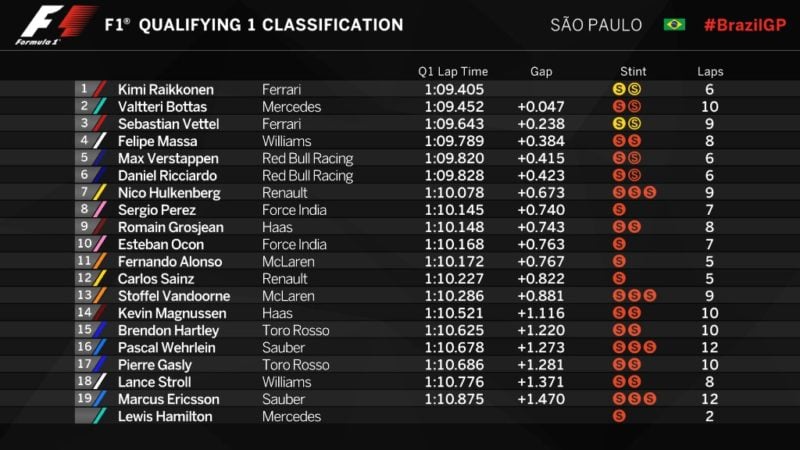







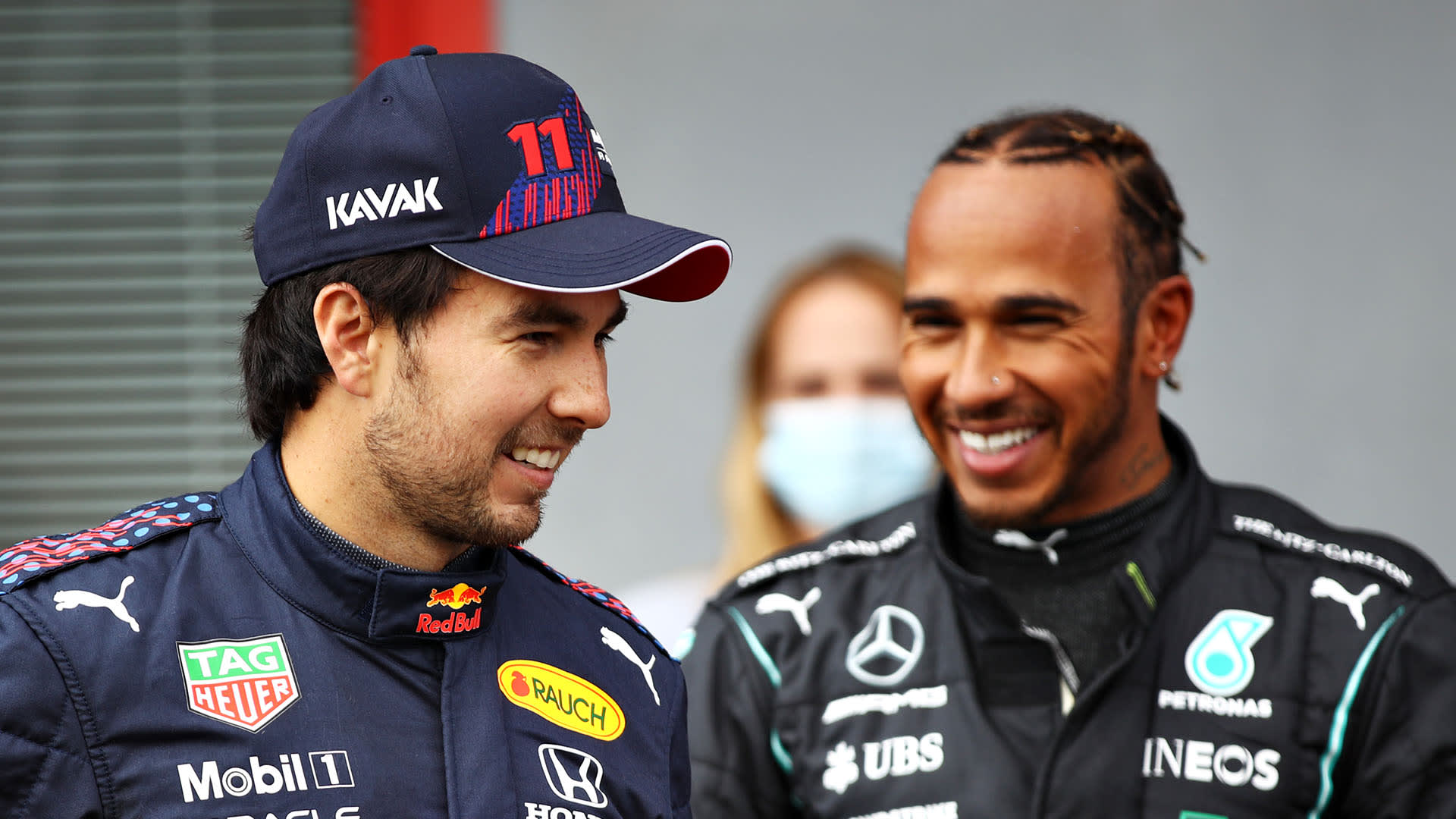


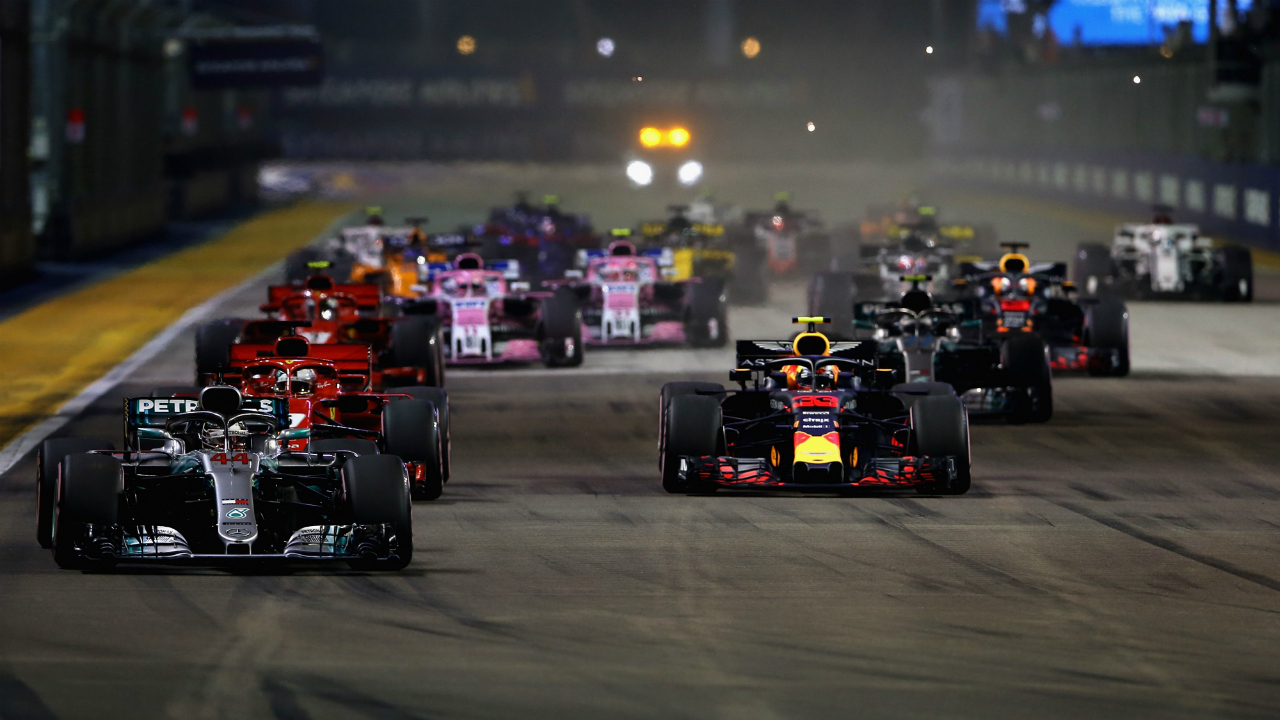




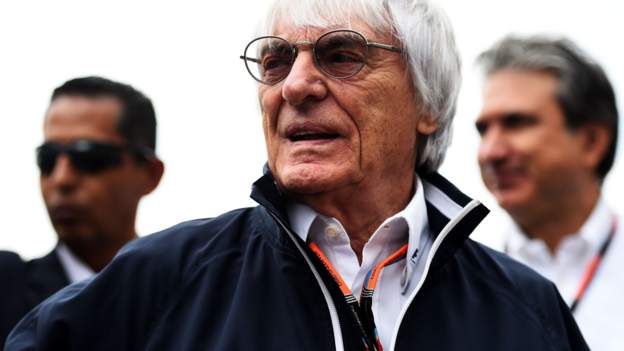

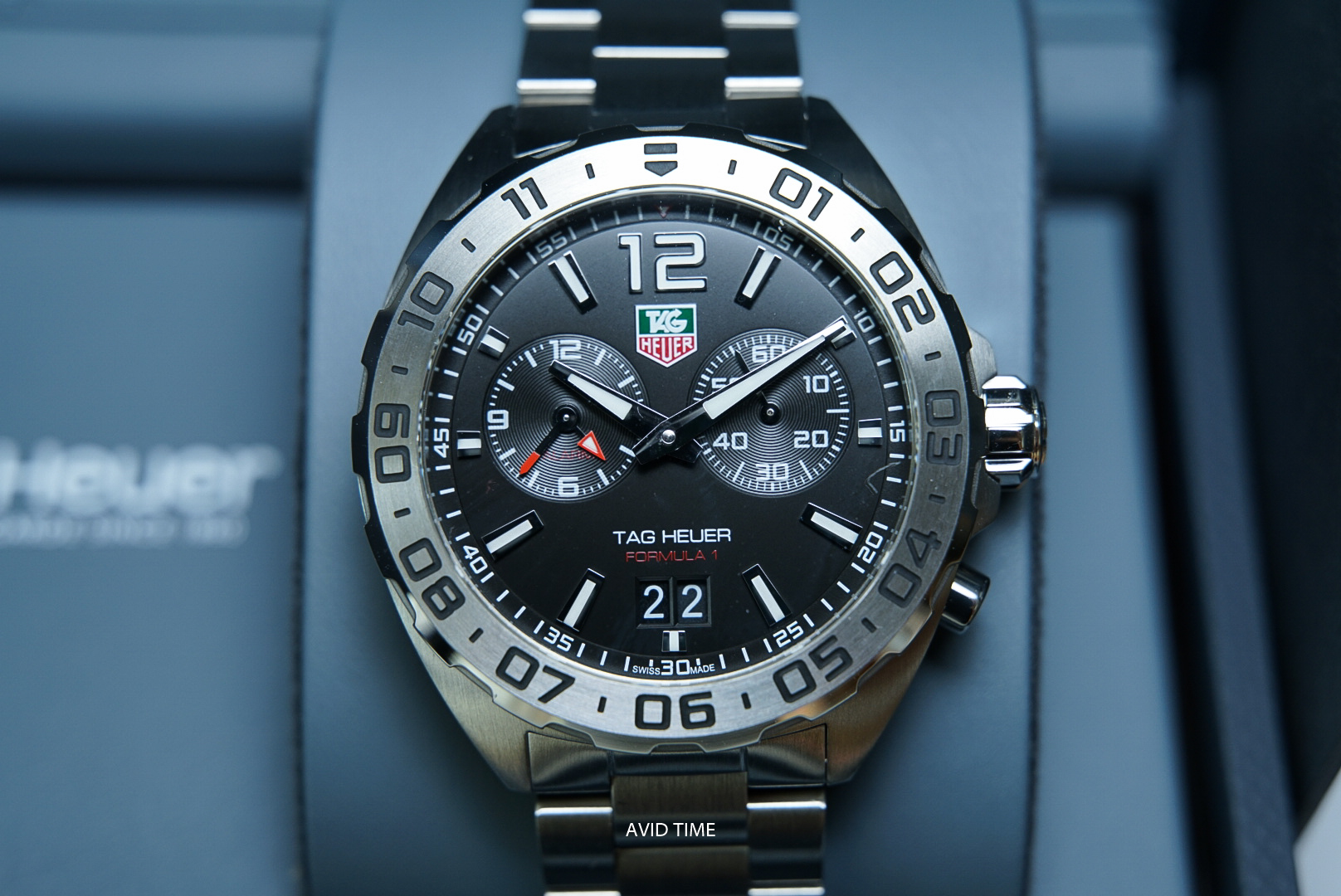





No comments:
Post a Comment
Note: Only a member of this blog may post a comment.